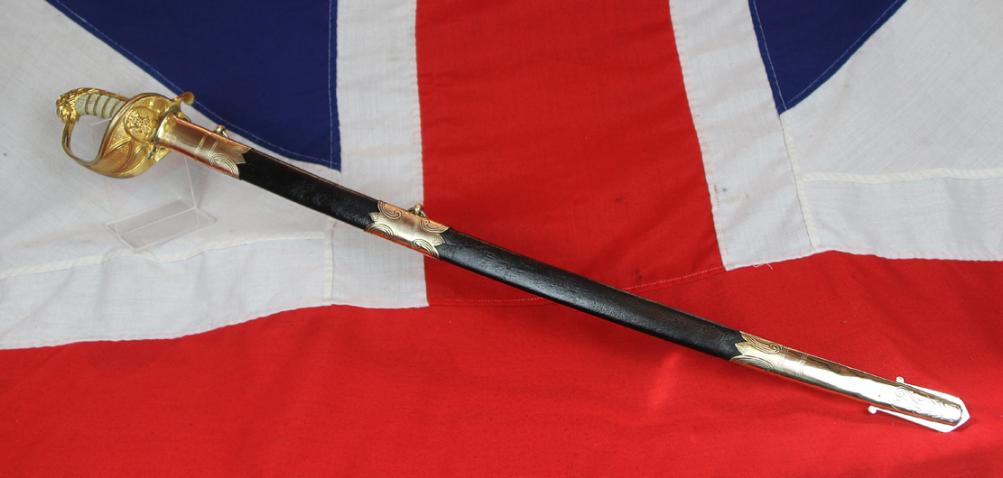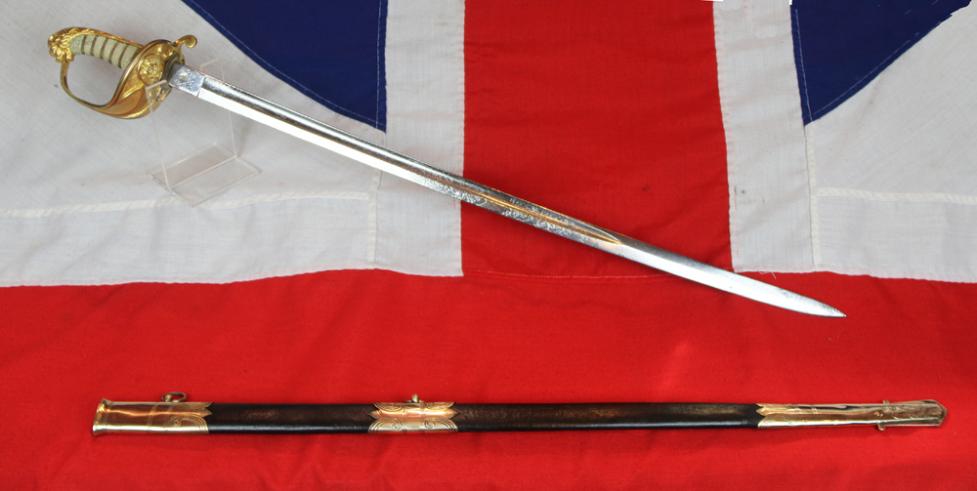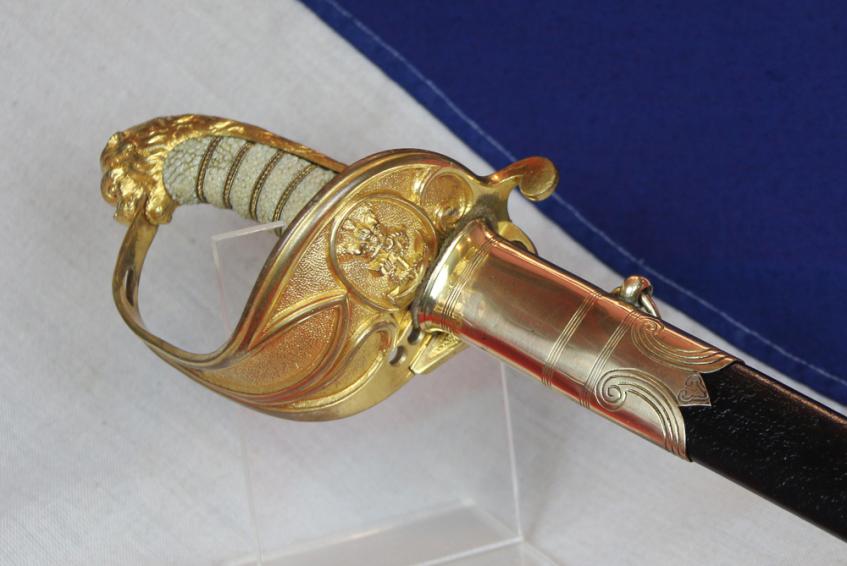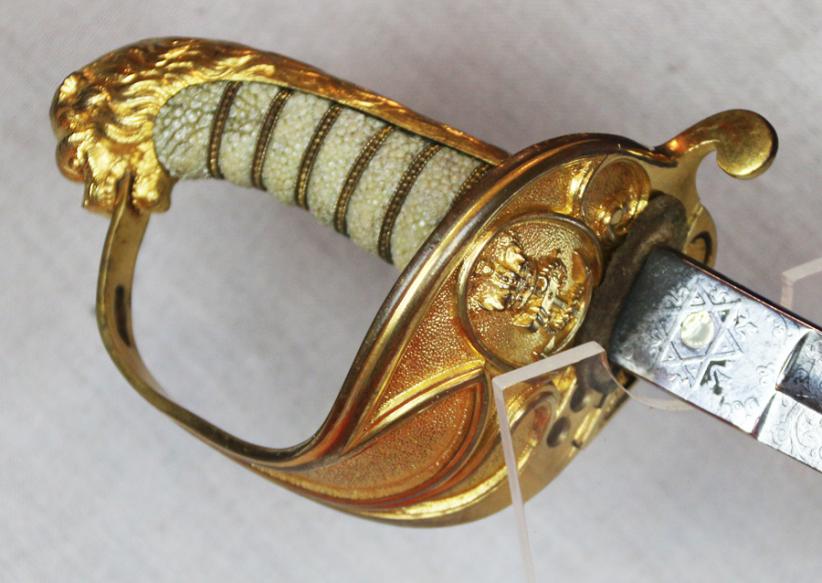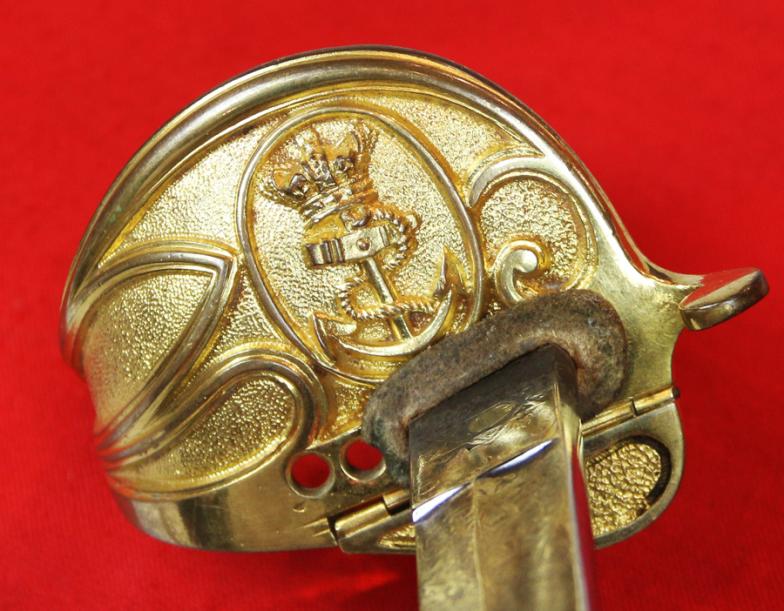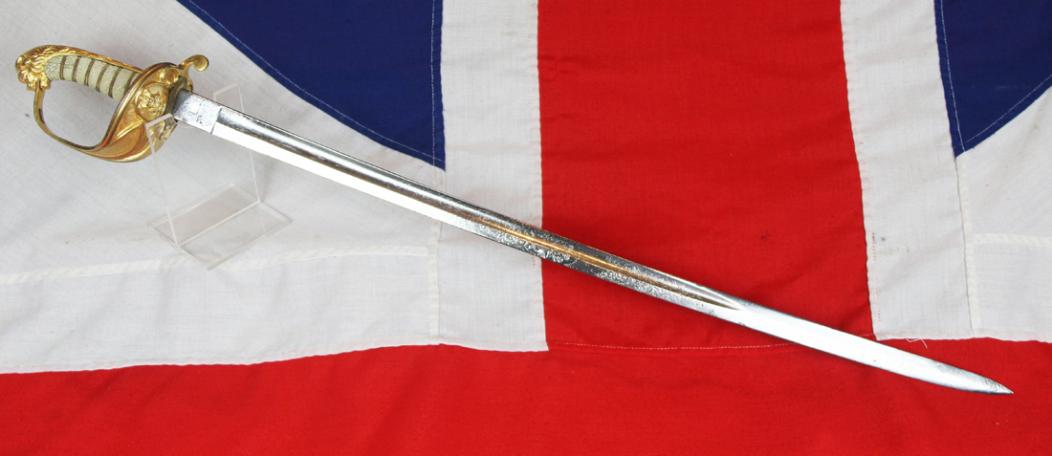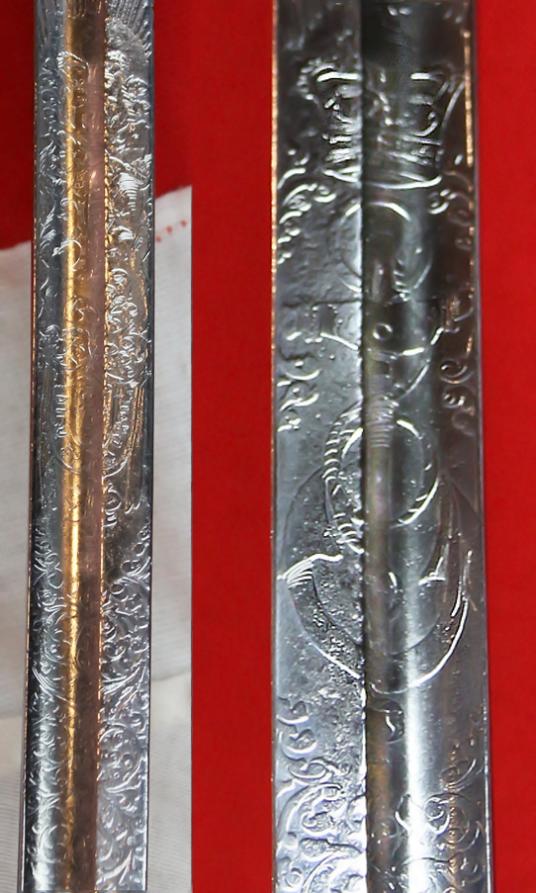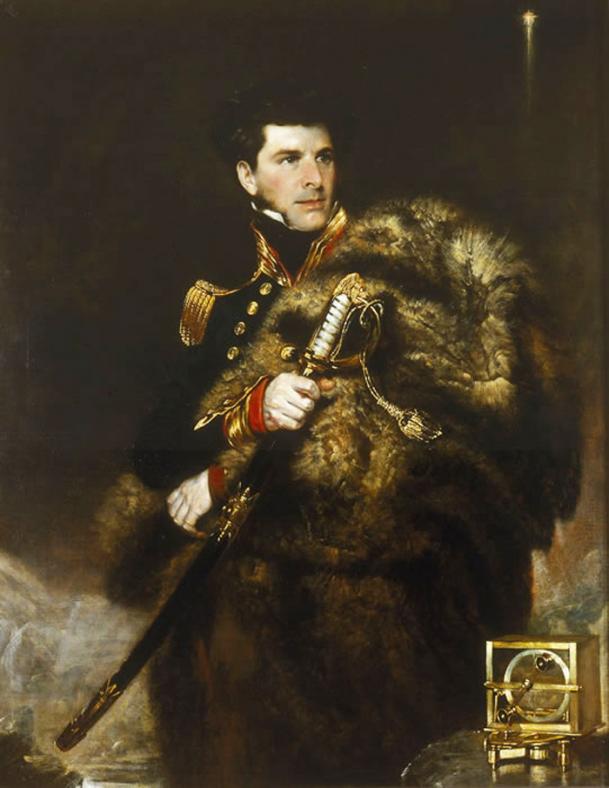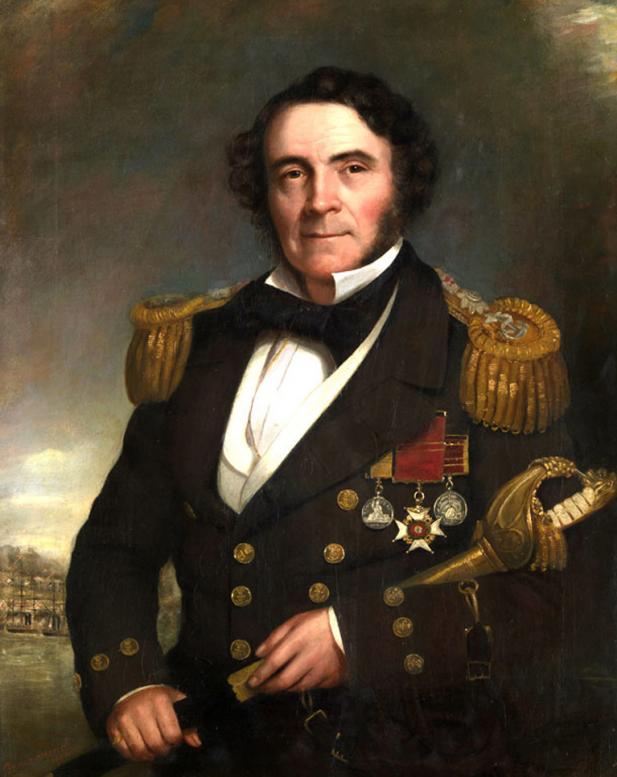A Superb 1827 Pattern Victorian Royal Naval Officer's Dress cum Combat Sabre
With its original scabbard in brass and leather. Fancy etched fighting weight combat blade, with warranted mark. Bespoke made. In overall stunning condition, with all its original fire gilt remaining to the stunning hilt, that gives the appearance that externally it has been air-tight stored since it was retired from service, and used from the period of the 1840's up to the 1900's. Used in the era when the Royal Navy still used the magnificent 100 gunner 'Man O' War' galleons, then moving into the age steam battleships, and into the great 'Iron Clads' that were being produced for the new form of naval warfare. It was from this era that the world was to see the end of the great sailing ships that coursed the seven seas for the greatest navy the world has ever known. The Royal Navy had not been keen to sacrifice its advantage in steam ships of the line, but was determined that the first British ironclad would outmatch the French ships in every respect, particularly speed. A fast ship would have the advantage of being able to choose a range of engagement which could make her invulnerable to enemy fire. The British specification was more a large, powerful frigate than a ship-of-the-line. The requirement for speed meant a very long vessel, which had to be built from iron. The result was the construction of two Warrior-class ironclads; HMS Warrior and HMS Black Prince. The ships had a successful design, though there were necessarily compromises between 'sea-keeping', strategic range and armor protection; their weapons were more effective than those of Gloire, and with the largest set of steam engines yet fitted to a ship they could steam at 14.3 knots (26.5 km/h).[16] Yet the Gloire and her sisters had full iron-armor protection along the waterline and the battery itself. Warrior and Black Prince (but also the smaller Defence and Resistance) were obliged to concentrate their armor in a central "citadel" or "armoured box", leaving many main deck guns and the fore and aft sections of the vessel unprotected. The use of iron in the construction of Warrior also came with some drawbacks; iron hulls required more regular and intensive repairs than wooden hulls, and iron was more susceptible to fouling by marine life.One picture in the gallery is a British Man O' War HMS MarlboroughHMS Marlborough was a first-rate three-decker 131 gun screw ship built for the Royal Navy in 1855. She was begun as a sailing ship of the line (with her sister ships HMS Duke of Wellington, HMS Prince of Wales and HMS Royal Sovereign), but was completed to a modified design and converted to steam on the stocks, and another the Bombardment, by the Royal Navy ship, HMS Bulldog, of Bomarsund, during the Crimean War. Traditional hilt with fine traditional detailing of a Royal Navy crowned fouled anchor, with shagreen wire bound grip, and copper gilt and leather mounted scabbard. Used in the incredible days of the Crimean War against Russia, and in the Baltic Sea, in Royal Naval service in the days of the beginning of the great steam driven Ships-of-the-Line. A Victorian officer used this sword for both dress and in combat on the new great warships, that at first glance appear to be ships of Trafalgar vintage, but were fitted with the first massive steam engines. This sword would have been used from then, and into the incredible very beginnings of the Ironclad Battleships. Iron reinforced and armoured ships that developed into the mighty Dreadnoughts of the 20th century that were the mainstay of the most powerful Navy that the world had ever seen. British Naval Officer's swords are traditionally the finest quality swords ever worn by any serving officer of the world's navies. The blade is superbly bright with traces of old salt surface pitting
Code: 23243
Price
on
Request

